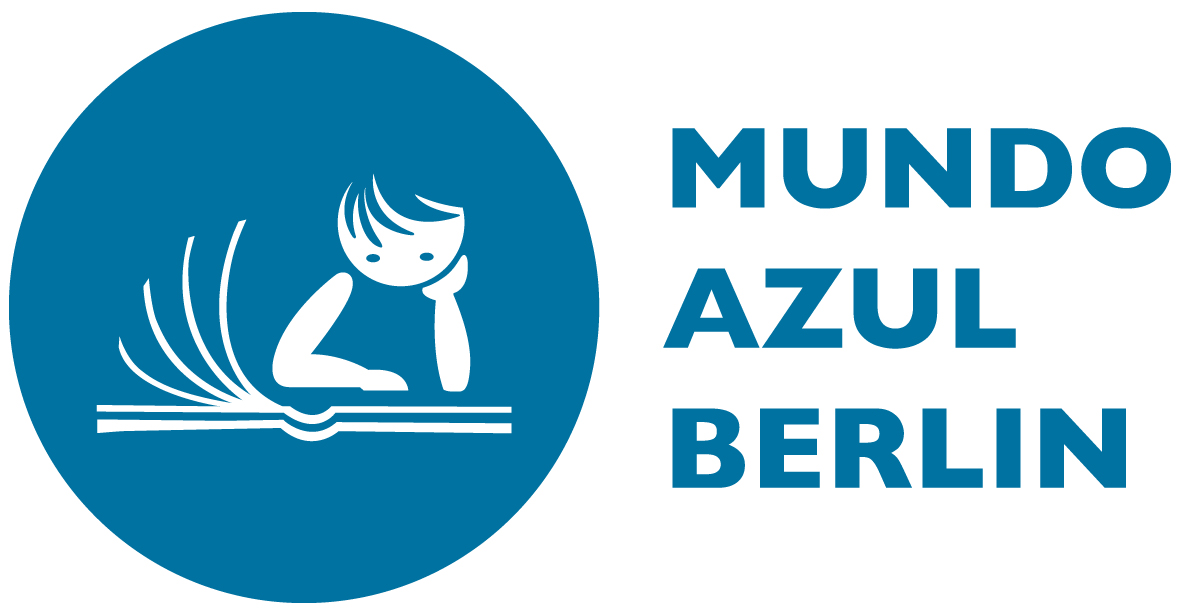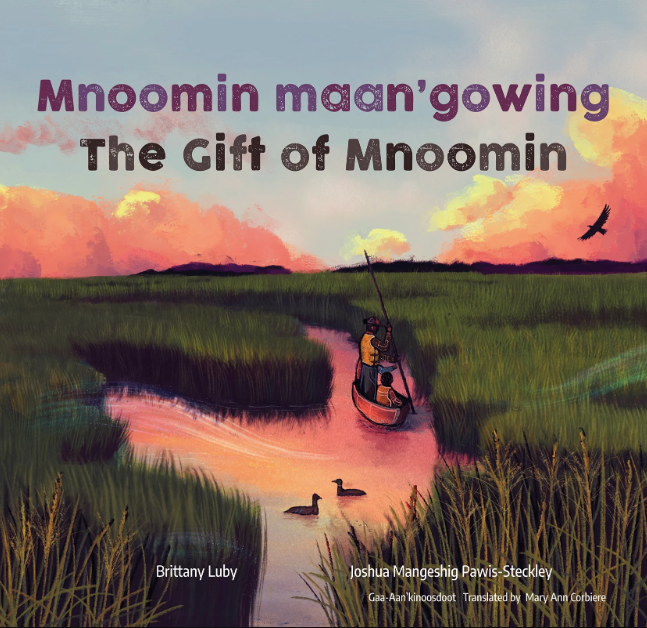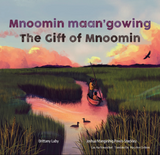Related Books
You may also like:
Kaaliawiri, el árbol de la vida / Bilderbuch Spanisch / Francisco Ortiz / Illustration von Ciça Fittipaldi
You may also like:
Fernanda / Bilderbuch Spanisch / Daniela Pabón Llinás / Illustration von Jorge Mato Troche
You may also like:
Una sombra sobre toda la tierra / Bilderbuch Spanisch / Rafael Yockteng und Jairo Buitrago
You may also like:
Tu fantástico cuerpo / Bilderbuch Spanisch / Pernille Engsig Eskilden y Jakob Brodersen / Illustration von Kamilla Wichmann
You may also like:
Alergias / Bilderbuch Spanisch / Katya Klimova
Mnoomin maan'gowing / The Gift of Mnoomin / Bilingual Bilderbuch / Brittany Luby / Mangeshig Pawis-Steckley
Für Kinder ab 3 Jahren
In this bilingual book, an Anishinaabe child explores the story of a precious mnoomin seed and the circle of life mnoomin sustains.
Written in Anishinaabemowin and English, the story opens at harvest time. A child holds a mnoomin seed and imagines all the life that made a single seed possible—Mayfly, Pike, Muskrat, Eagle and Moose, all had a part to play in bringing the seed into being. What will happen if the seed sprouts? Underwater leaves will shelter young fish, shoots will protect ducklings, stalks will feed larvae, in turn providing food for bats…until finally mnoomin will be ready to harvest again.
We follow the child and family through a harvest day as they make offerings of tobacco, then gently knock ripe seeds into their canoe. On shore, they prepare the seeds, cook up a feast, and gratefully plant some seeds they’d set aside.
This beautifully written and illustrated story reveals the cultural and ecological importance of mnoomin. As the author’s note explains, many Anishinaabeg agree that “wild rice” is an inaccurate term for this plant relation, since part of the harvest is sown every year to help sustain human and non-human beings. Includes a translator’s note.
© House of Anansi.
| Titel | Mnoomin maan'gowing / The Gift of Mnoomin / Bilingual Bilderbuch / Brittany Luby / Mangeshig Pawis-Steckley |
| Kurator | mundo azul |
| Typ | Bilderbuch Englisch |
| ISBN | |
| Online seit | Nov 26, 2023 |
Für Kinder ab 3 Jahren
In this bilingual book, an Anishinaabe child explores the story of a precious mnoomin seed and the circle of life mnoomin sustains.
Written in Anishinaabemowin and English, the story opens at harvest time. A child holds a mnoomin seed and imagines all the life that made a single seed possible—Mayfly, Pike, Muskrat, Eagle and Moose, all had a part to play in bringing the seed into being. What will happen if the seed sprouts? Underwater leaves will shelter young fish, shoots will protect ducklings, stalks will feed larvae, in turn providing food for bats…until finally mnoomin will be ready to harvest again.
We follow the child and family through a harvest day as they make offerings of tobacco, then gently knock ripe seeds into their canoe. On shore, they prepare the seeds, cook up a feast, and gratefully plant some seeds they’d set aside.
This beautifully written and illustrated story reveals the cultural and ecological importance of mnoomin. As the author’s note explains, many Anishinaabeg agree that “wild rice” is an inaccurate term for this plant relation, since part of the harvest is sown every year to help sustain human and non-human beings. Includes a translator’s note.
© House of Anansi.










